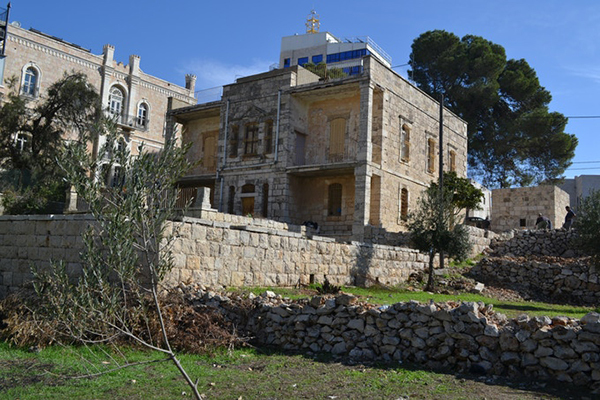
R
E
V N
E
X
T
Emily Jacir Launches Crowdfunding Campaign for New Art Center in Bethlehem
Palestinian artist Emily Jacir launched a crowdfunding campaign on May 23 to raise funds for her family’s project—the conservation of their Bethlehem family home, which will be converted into an art center known as Dar Yusuf Nasri Jacir for Art and Research. The house was built in 1890, and is now located steps away from the Israeli West Bank “security barrier,” which is the de facto border between Palestine and Israel. The center will focus on presenting visual art and cinema, as well as host research archives and a residency program in collaboration with Bethlehem University. Jacir’s initiative raised nearly USD 24,000 within 24 hours—over half of the stated goal of USD 45,000.
Jacir won the 2007 Golden Lion Prize and the 2008 Hugo Boss Prize, and is attentive to issues of border crises, migration and narratives of the dispossessed. Her art projects emphasize the participation of the community, like the multipart Where We Come From (2001–03), in which Jacir posed a question to Palestinians living under occupation as well as overseas: “If I could do anything for you, anywhere in Palestine, what would it be?” The artist documented their replies and the fulfillment of their wishes in text and photos, exploiting the freedom of movement she enjoyed as a US passport holder in Israeli-occupied Palestine. Her installation research project Material for a Film (2004– ) traces the life of late Palestinian intellectual Wael Zuaiter, who was assassinated by Israel’s national intelligence agency Mossad. For the transformation project of Dar Jacir, the artist writes on Kickstarter that Dar Jacir is “a local, grass-roots, and artist-run initiative for the community,” undertaken without the financial backing or input of any international organization or government. “Our neighbors are really excited and supportive about the project,” Jacir said. “We have several collaborations happening with amazing and diverse groups, including Bethlehem University as well as Alrowwad. On top of this, we plan on spending the fall of 2017 meeting with local organizations, individuals, artists and leaders to introduce our space to the local community and work on ideas for future collaborations and initiatives.” Jacir will dedicate the art center entirely to artists, researchers and communities, who will then be free from all obligations to foreign institutions or donors. She is determined to show that “initiatives like ours can exist.”
Built by Emily Jacir’s great-great-grandfather, the 127-year-old building is located on the main Jerusalem-Hebron road in Bethlehem. Along with three refugee camps, this building stands as a flashpoint of fierce clashes between the Israeli Army and the Palestinians due to its location near the controversial West Bank security barrier, which limits the freedom of movement for Palestinians residing in the West Bank. In an email interview with ArtAsiaPacific, Jacir said, “Over the last several years the area has been tear-gassed so heavily that everyone on our street had to evacuate. All the damage to our house has happened during these confrontations—smashed windows, destroyed wood, smashed walls, smashed stones. We have replanted our garden many many times. The poor plants and trees have been burnt to the ground on many occasions.” The wall has inspired many forms of resistance via community organization and even art. On March 20, British street artist Banksy’s Walled Off Hotel—a hotel and art gallery that is also a channel of protest—opened its doors beside the concrete barrier in Bethlehem. Likewise, Jacir’s renewal and repurposing of her family’s historical house is also a gesture against political tension and violence.
Modifications that are required include plumbing, electrical rewiring and even an adaptation of the water supply system, which extends into a well in the garden. The renovation will not be an easy task, and Jacir suggests that the six-month process will likely face delays due to conditions in the West Bank. The completed center will have a main hall for exhibitions, public screenings and meetings; an archive room and research center; a residency and seminar room; and a studio for workshops. If everything goes according to plan, the center will be inaugurated in September, and then the archive will be assembled. Its residency program, public talks and workshops are scheduled to begin in early 2018.
Jia Dong is an editorial intern at ArtAsiaPacific.
To read more of ArtAsiaPacific’s articles, visit our Digital Library.




